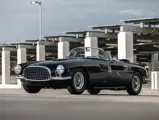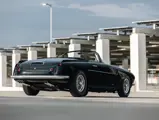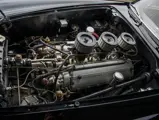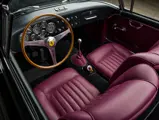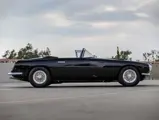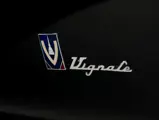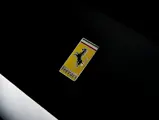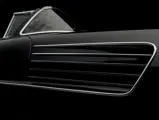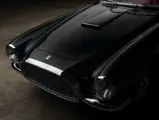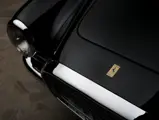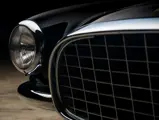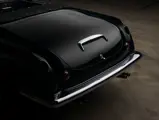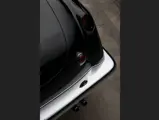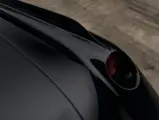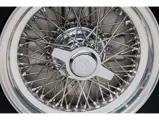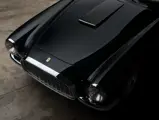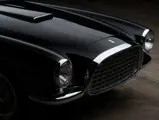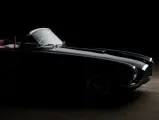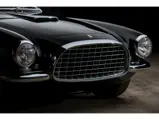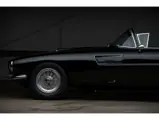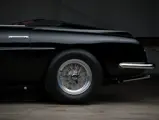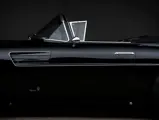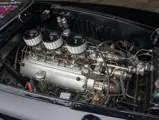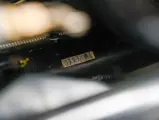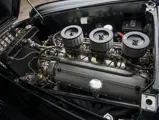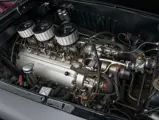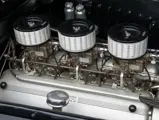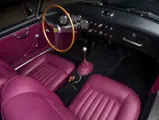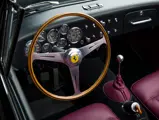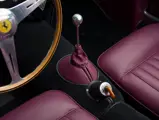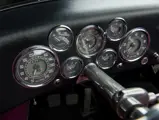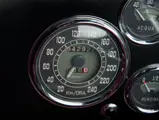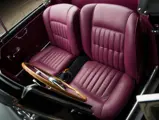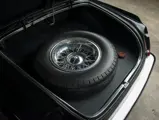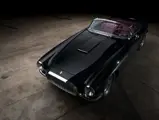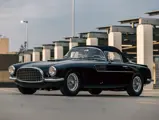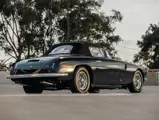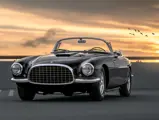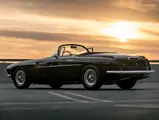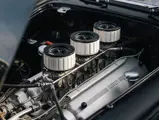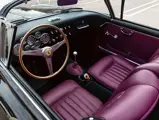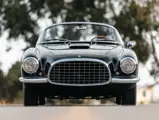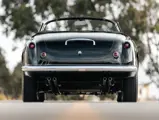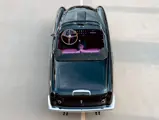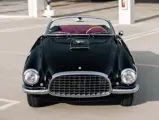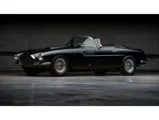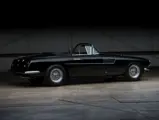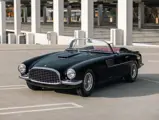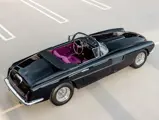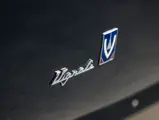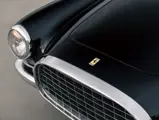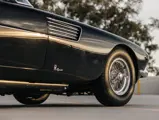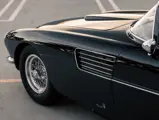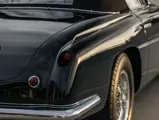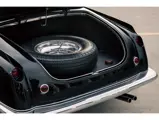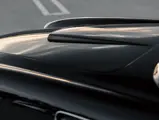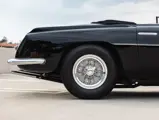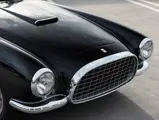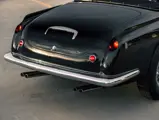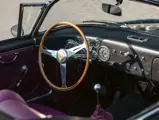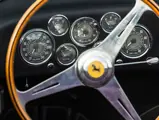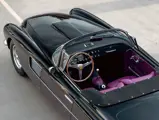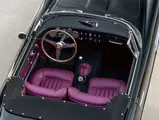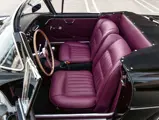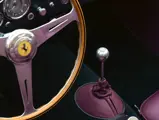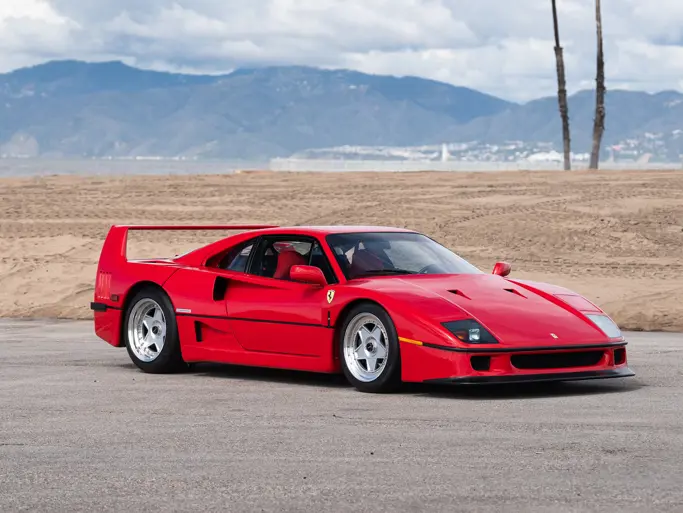Monterey 2022
1954 Ferrari 375 America Cabriolet by Vignale
{{lr.item.text}}
$7,595,000 USD | Sold
 | Monterey, California
| Monterey, California
{{internetCurrentBid}}
{{internetTimeLeft}}

- One-off example clothed with exquisite open alloy coachwork by Vignale
- The only cabriolet out of just 12 total 375 America examples built
- One of only three big-block cabriolets with 4.5-liter or larger engines built in the 1950s
- Personally sold by Enzo Ferrari to Rome resident Mrs. Bianca Colizzi, daughter of famous Italian film director Giuseppe Colizzi, in 1954
- Only four long-term owners since being imported into the US in 1958, with the consignor retaining the car for the last 25 years
- Retains matching-numbers engine, gearbox, rear axle, and bodywork
- Accompanied by rare original factory hard top
- An incredibly rare and elegant example of the roadgoing 375 grand tourer
AMERICA THE BEAUTIFUL
At the Paris Salon in October 1953, Ferrari introduced two new models intended to appeal to clients’ grand touring sensibilities, each positioned for a specific market. The 250 Europa was powered by a diminutive 3-liter version of the race-winning Lampredi competition engine, while the 375 America featured a detuned version of the monstrous 4,542-cubic-centimeter Lampredi motor from the 375 MM race car. The former car was essentially a brand-new model, one that paved the way to the standard production 250 GT that was soon to follow. Conversely, the 375 America was a replacement for the tepidly selling 342 America, and like its predecessor was conceived as a luxurious grand touring version of the concurrent Lampredi race car, though in this case the cars were assigned roadgoing odd-numbered chassis numbers.
Both models were built on an extended 2,800-millimeter-wheelbase chassis whose running gear featured a four-speed gearbox with a multi-plate clutch, independent front suspension, and a live rear axle. While the Europa was designated with the chassis number suffix EU, the 375 America examples were stamped with an AL suffix, standing for America Lungo (in a nod to the elongated wheelbase). Just 22 examples of the 250 Europa were built before the model gave way to the shorter-wheelbase second-series Europa GT, while the 375 America was built in an even more sparing quantity. Just 10 examples were originally completed as 375 Americas, while two more cars that began life as 250 Europas were factory-converted early in their lives, including the feature lot. The latest 375 was available in an assortment of coachwork that ultimately included eight similarly styled coupes by Pinin Farina, three more by Vignale, and this car: the sole open example built, a Vignale-clothed alloy cabriolet.
CHASSIS NUMBER 0353 AL
Retaining its major matching-numbers components (as per a Ferrari Classiche inspection document), and boasting a short chain of well-documented ownership, this magnificent one-off cabriolet is one of the most sensational examples of Maranello’s 1950s open grand tourers. According to the research of marque expert Marcel Massini, this 375 America left the Factory finished in black paint over a black interior with a tan soft top. The cabriolet was clothed by Vignale in particularly elegant all-alloy coachwork that featured a rakish one-piece wraparound windscreen, a hood scoop, and five-gill fender vents with a sweeping bottom character line that extended through the rear fenders. The design was similar in nature to the Vignale coachwork mounted on chassis number 0359 GT, a 250 Europa GT sold to the well-known Ferrari client and Belgian royal Princess Liliane de Rethy, though 0353’s longer wheelbase allows the design to flourish with beautiful aesthetic flow.
Factory equipped with a rare hard top that further distinguishes the Vignale profile, 0353 AL was sold directly from Ferrari to Mrs. Bianca Colizzi, daughter of famous Italian film director Giuseppe Colizzi, in December 1954. Shortly before Christmas 1954 the car was registered on Italian plates “Roma 215282”. After only a year the cabriolet was reportedly in storage with a doctor, and in this state the car was spotted by Luigi Musso, the future Scuderia Ferrari factory driver. Musso mentioned the car to an acquaintance named Harry Chambers, an American employee of TWA who had recently opened the airline’s Milan division. Chambers would go on to enjoy a long career in the aerospace sector, being knighted by the Italian government in 1960 and eventually becoming the general manager of NASA’s Kennedy Space Center in Cape Canaveral, Florida. Mr. Chambers tracked down the Ferrari and made an offer, officially purchasing the car in October 1956. During nearly two years with the 375, Chambers spiritedly enjoyed it while feeding his passion for motorsports, and the car was photographed on at least one occasion while parked at the Monza circuit.
In July 1958 Chambers sold the Ferrari to his friend and fellow TWA employee, flight dispatcher Joseph Fitch, who hailed from Los Angeles, California. By this point the coachwork had been refinished in a shade of gun-metal grey. Mr. Fitch enjoyed the 375 briefly in Italy before importing the car back to California in December 1958.
Following a transport incident while the car was on its way to the United States—which required part of the body to be repainted anyway—Fitch had the coachwork refinished in dark blue, and the mechanicals were gradually rebuilt; Lampredi engines were notoriously difficult to service in the US at that time, with only a handful of mechanics understanding how to successfully reassemble them. After the refurbishment was completed in 1962, the 375 was Fitch’s pride and joy, being carefully garaged at his home in Southern California and frequently photographed. In 1969 he displayed the cabriolet at the Ferrari Owners Club meeting in Culver City, California, and in August 1972 the car won first in class at the Hollywood Bowl Concours d’Elegance.
By April 1973, with an eye on retirement, Fitch began contemplating the end of his ownership of 0353 AL, even consulting with the Smithsonian Museum and the Cunningham Auto Museum about a potential donation. Ultimately, though, he chose to sell the uber-rare cabriolet, first placing an advertisement in Road & Track magazine, which printed photographs of the car. Fitch eventually found a buyer in fellow Ferrari enthusiast Wayne Golomb of Springfield, Illinois, who purchased the Ferrari in 1974.
The 375 America was featured in several marque publications during Mr. Golomb’s ownership, and in 1980 he conducted a comprehensive restoration. After 21 years Golomb sold the Ferrari in 1995 to Illinois resident Dennis Machul, who enjoyed the cabriolet during a successful completion of the 1995 Colorado Grand. By 1998 the unique Vignale Cabriolet was sold to the consignor and, following a paint freshening in black with a reupholstered interior, the car has been carefully kept in climate-controlled storage ever since.
Still accompanied by the rare factory hard top, this elegant Ferrari is an unusual open-bodied interpretation of the Lampredi-engined grand tourer, as one of just a few cars that occupy the developmental period between the 342 America and the forthcoming Superamerica. A true one-off, this car is powered by one of the three largest engines of any Ferrari cabriolet built during the 1950s. Recently submitted for Ferrari Classiche certification, 0353AL is confirmed to retain its matching-numbers drivetrain components and alloy coachwork. A report by Ferrari Classiche is available for review with an RM specialist, containing details on the relatively minor items required by the next owner in order to finish the certification process.
This sensational Vignale-bodied Ferrari would make an ideal entrant at top-shelf concours d’elegance and driving tours worldwide, offering its next caretaker a completely unique and stirring example of the venerable 375 America.

